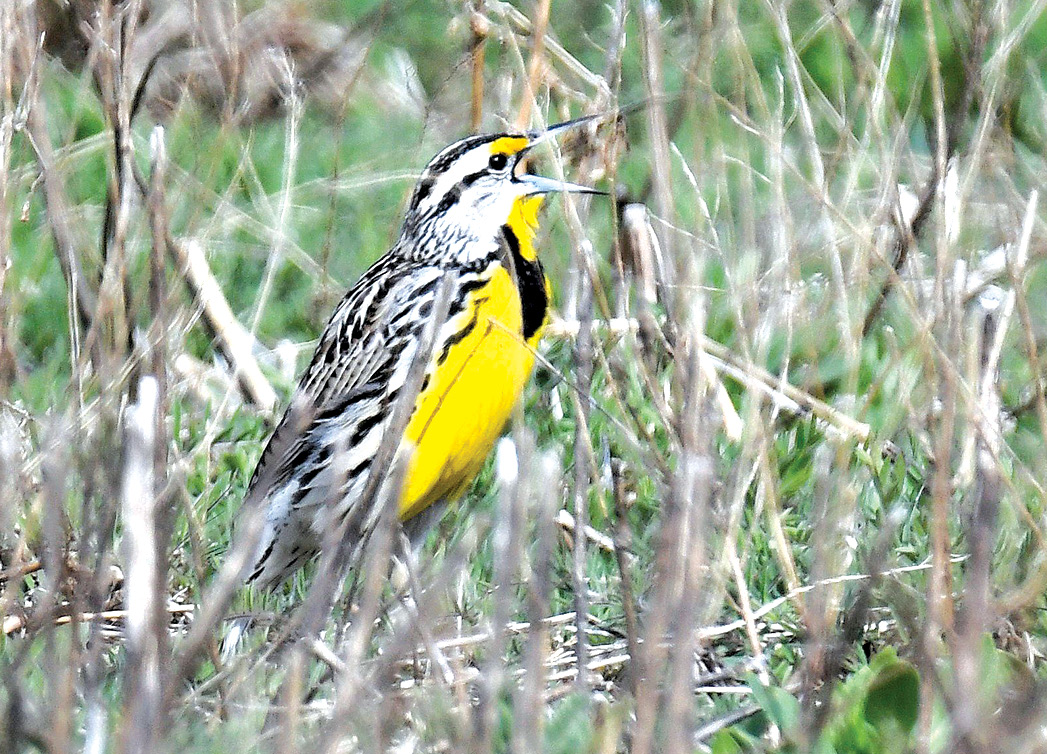I have always had a soft spot in my heart for meadows. I spent much of my childhood racing through them in my cut off Levis, en route to my uncle’s pond. In the spring we could almost see the grass green up before our eyes. We were always on the lookout for woodchuck holes so as not to twist our ankles. Often we flushed red winged blackbirds that were nesting in the field. We would try to locate their nests once the birds flew, and more often than not, even though we swore we knew exactly where the mama took flight, we were perpetually lost in a sea of timothy and clover. But we would still find our way to the pond, only to make the trip back again, trying to find our passageways through the fields where we had laid the grass down with our young bodies.
These days, as our birding group finishes up the annual Suffield bird census, we find ourselves in all kinds of terrain looking for birds. Lately we have taken to the meadows and fields again as we go to the wildlife management area on the outskirts of town. There, after wandering for hours in grass reminiscent of the plains of Saskatchewan, we have been rewarded with many sightings of the meadowlark. About the size of a robin, with a vibrant yellow breast sealed with a black V painted across his chest, he is one handsome bird. A native of the grasslands, meadowlarks eat grasshoppers, seeds and other insects. When in flight they prefer low altitude, skimming across the grass and landing with a brief reveal of white tail feathers. He and his mate sing from fence posts or bushes, and at breeding time they create a thatched nest which sits on the ground camouflaged by the grasses towering around it. But the ground is a vulnerable spot to raise a brood, as tractors and clomping feet are just a few of the hazards which have set the meadowlark population back. We tread lightly and stick to the trail dissecting the grass. The fragility of the nest makes us appreciate the lark’s presence all the more.
The message that we take away is that meadows are an unsung habitat worth preserving. How fortunate we are that the State of Connecticut set aside the land for the protection of several species of birds that spend their days on the open plains.
After we get our fill of the meadowlark, we can’t help but launch into the conversation about where we like it best in Suffield as we hoof it week after week. It seems like we spent a lot of time in the shadowy woods this winter, so this exposed area seems like someone turned on the lights, and we can see forever. Many of us former teachers circle back to All the Places to Love by Patricia MacLachlan, a book about place meant for clutching to one’s chest. The family in the book all take turns telling the newborn about the places they love best, and the scenes in the book remind me of our beautiful little town. They add the exclamation point by carving the baby’s name into the rafters of the barn alongside generations of names that have stood the test of time.
If you have someone in your house who is starting life’s journey or finishing it up, the idea is pretty poignant. Trust me, the words and paintings stay with you long after you close the cover, showing how a good book can shore up our connections. And that connection is strong, bringing to mind people I love who have taken their last step but are still on the trail with me. There is plenty of room so friends join me, and we generate our own everchanging stories from the dirt we walk on. None of us know how the story will end. And while we hoof it, our repartee about the best place will continue. Meadowlarks help me make my case for the grasslands. But soon enough, some snake will be slithering through the swamp, and I’ll only have eyes for the wetlands.
